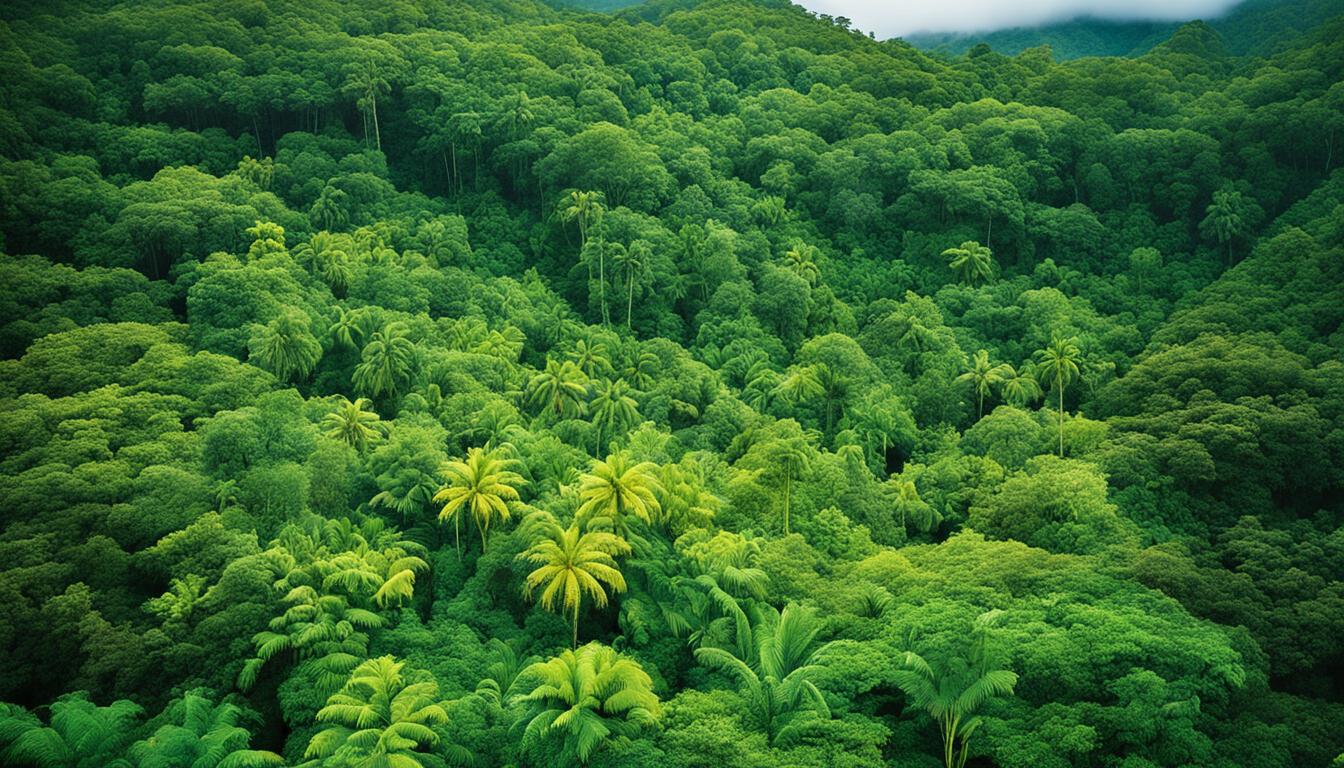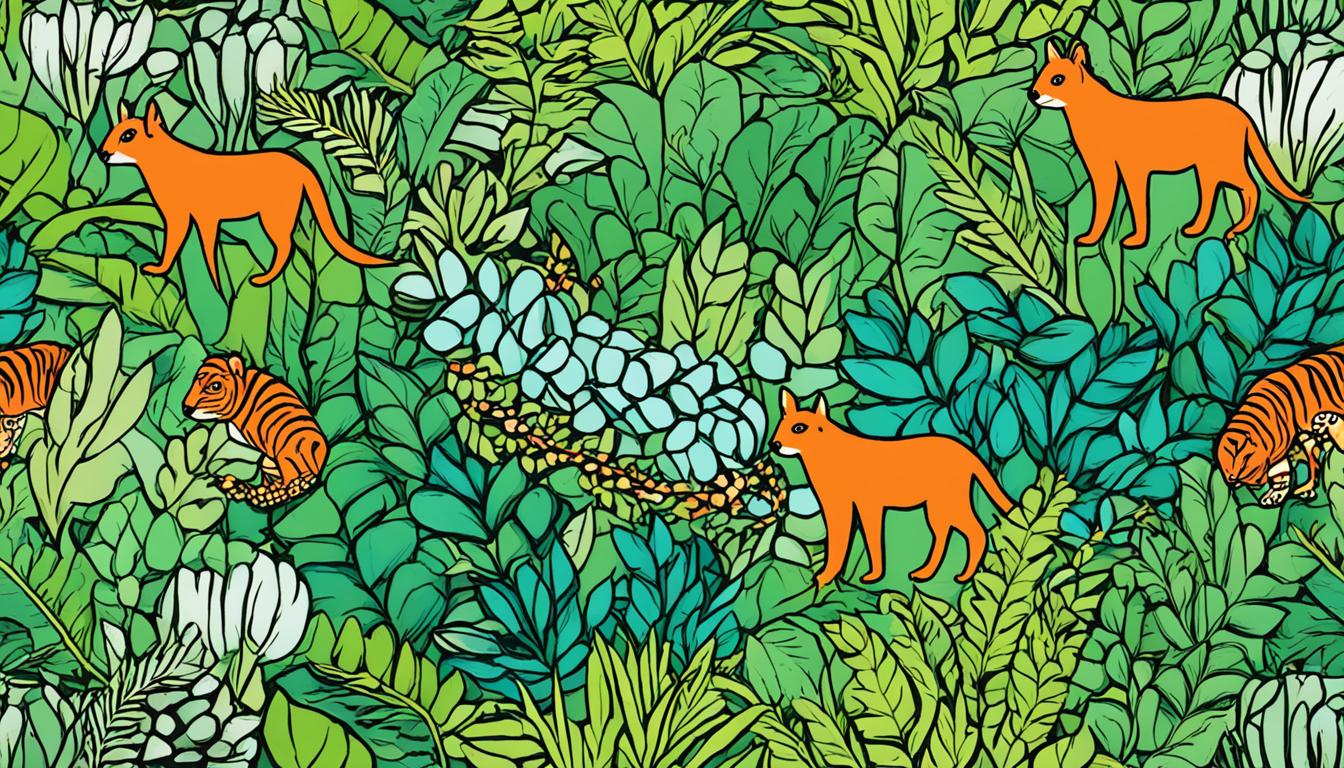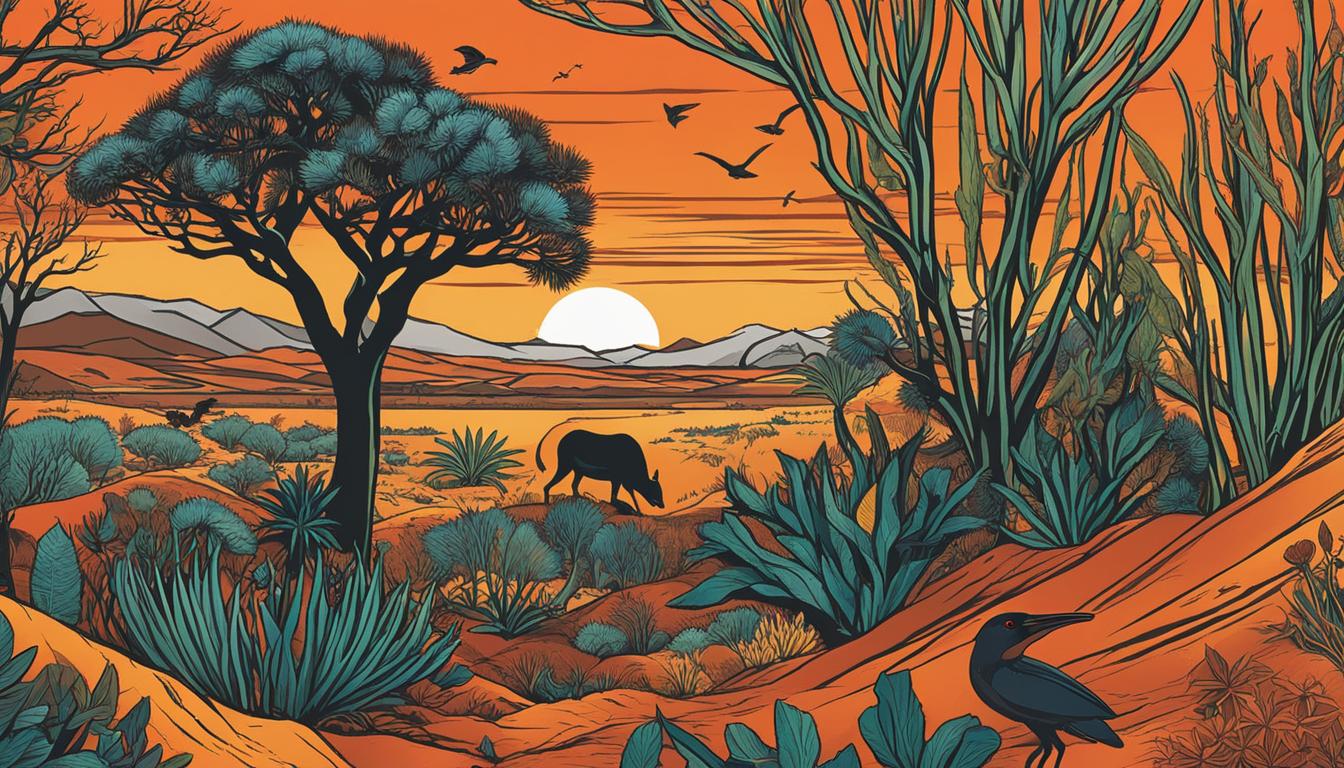Guatemala Biodiversity: Animal and Plant Species and What Is Under Threat
Did you know that Guatemala is home to an astounding number of animal and plant species? With its diverse ecosystems and rich biodiversity, this Central American country is truly a natural wonder. However, this exceptional biodiversity is under threat, facing significant challenges that require urgent attention. From habitat loss to species exploitation, Guatemala’s unique flora and fauna are at risk.
Key Takeaways
- Guatemala is known for its exceptional biodiversity of animal and plant species.
- Habitat loss, species exploitation, and other threats are endangering Guatemala’s flora and fauna.
- Conservation efforts are crucial to preserve Guatemala’s unique natural heritage.
- Protected areas and multilateral agreements play a vital role in biodiversity preservation.
- Addressing challenges such as limited knowledge and ineffective management is essential for successful conservation.
Key Policies and Governance Approach
Guatemala has implemented biodiversity policies and a comprehensive governance approach to protect its natural heritage. As a signatory to the Convention on Biological Diversity (CBD), Guatemala demonstrates its commitment to global conservation efforts. The country has developed a National Biodiversity Policy that addresses key aspects such as knowledge and valuation, conservation and restoration, sustainable use, climate change mitigation and adaptation, as well as policy implementation.
The National Council for Protected Areas (CONAP) plays a crucial role in formulating and implementing policies that focus on biodiversity conservation. The Act on Protected Areas, established by CONAP in 1989, governs the management and use of biodiversity resources in Guatemala.
To ensure effective protection, the government has created the National System of Protected Areas (SIGAP) with 348 designated areas, spanning a total area of 4,176,914 ha. These protected areas not only preserve unique ecosystems but also safeguard the countless plant and animal species that call Guatemala home.
Policies for Biodiversity Conservation
Guatemala’s National Biodiversity Policy serves as an overarching framework for biodiversity conservation, focusing on several strategic axes:
- Knowledge and Valuation: Promoting research and understanding of Guatemala’s unique biodiversity to inform conservation efforts.
- Conservation and Restoration: Protecting and restoring natural habitats to preserve species and ecosystems.
- Sustainable Use: Balancing the utilization of biodiversity resources with long-term sustainability.
- Climate Change Mitigation and Adaptation: Addressing the impacts of climate change on biodiversity through mitigation strategies and adaptive measures.
- Policy Implementation: Ensuring effective governance, enforcement, and compliance with biodiversity-related policies.
These policy efforts provide a robust foundation for the sustainable management and conservation of Guatemala’s remarkable biodiversity.
| Policies | Governance Approach |
|---|---|
| Convention on Biological Diversity (CBD) | National Council for Protected Areas (CONAP) |
| National Biodiversity Policy | Act on Protected Areas |
| – | National System of Protected Areas (SIGAP) |
The biodiversity policies and governance approach presented by Guatemala showcase the country’s dedication to preserving its natural heritage. However, additional efforts are necessary to ensure that these policies are effectively implemented, addressing the ongoing threats facing Guatemala’s rich biodiversity.
Successes and Remaining Challenges
Guatemala has made significant strides in biodiversity conservation, but there are still challenges that need to be addressed. Despite the progress in expanding protected areas and raising awareness about the value of biodiversity, there is limited and fragmented knowledge about the country’s rich biodiversity. This hinders effective conservation efforts.
Protected Area Management
One of the key challenges is the lack of effective management and financing plans for many protected areas. This leads to issues such as illegal logging, wildlife extraction, and deforestation. Without proper management, these activities threaten the delicate balance of ecosystems and put numerous species at risk.
Limitations of the National System of Protected Areas
The coverage of the National System of Protected Areas (SIGAP) in Guatemala is still limited. This means that important biodiversity sites and ecosystems are left unprotected. Expanded coverage is crucial to ensure the conservation of these valuable areas and their unique wildlife.
Threats to Biodiversity
Deforestation and habitat loss continue to be significant threats to Guatemala’s biodiversity. These activities disrupt ecosystems and displace numerous plant and animal species. The number of species identified as threatened is on the rise, highlighting the urgent need for increased conservation efforts.
To illustrate the impact of these challenges, here is a table showcasing the number of protected areas and the extent of deforestation in Guatemala:
| Category | Number of Protected Areas | Deforestation Extent |
|---|---|---|
| Biosphere Reserves | 12 | 18,000 hectares |
| World Heritage Site | 1 | 7,500 hectares |
| Natural Monuments | 27 | 12,000 hectares |
These figures highlight the importance of preserving and expanding protected areas to combat deforestation and protect biodiversity.
In conclusion, while Guatemala has seen successes in biodiversity conservation through the establishment of protected areas, challenges such as limited knowledge, ineffective management, and ongoing threats persist. Efforts to address these challenges and achieve conservation goals must be intensified to protect Guatemala’s unique and valuable biodiversity.

Key Threats to Biodiversity in Guatemala
The conservation of Guatemala’s biodiversity is facing numerous threats that jeopardize the delicate balance of ecosystems. These threats include habitat loss, degradation, and fragmentation, which have significant consequences for the survival of various species and the overall functioning of ecosystems.
Habitat loss occurs when natural habitats, such as forests and wetlands, are destroyed or converted for human activities such as agriculture, urbanization, or industrial development. This loss of habitat directly impacts the flora and fauna that depend on these areas for their survival.
Overexploitation of natural resources is another grave concern for biodiversity in Guatemala. The excessive and unsustainable harvesting of timber, wildlife, and other natural resources threatens vulnerable species and disrupts ecological equilibrium. It is important to strike a balance between human needs and the conservation of biodiversity.
Environmental degradation exacerbates the decline in biodiversity. Pollution, deforestation, soil erosion, and other forms of environmental damage degrade habitats and stress the species that depend on them. The degradation of ecosystems can have far-reaching effects, leading to a loss of biodiversity and the services they provide.
Additionally, the introduction of invasive species poses a significant threat to native plants and animals. Invasive species are non-native organisms that establish themselves in ecosystems and outcompete native species for resources, disrupting ecological balance and putting native species at risk of extinction.
It is crucial to address these threats to maintain the integrity of Guatemala’s biodiversity while ensuring sustainable development and the well-being of local communities.

By understanding and mitigating these threats, Guatemala can work towards preserving its rich biodiversity and ensuring the long-term sustainability of its ecosystems. Conservation efforts should focus on protecting and restoring habitats, implementing sustainable practices for resource use, raising awareness, and promoting the importance of biodiversity conservation.
Obstacles to Biodiversity Conservation in Guatemala
Guatemala’s efforts to conserve its rich biodiversity face several obstacles that impede progress. These challenges stem from various factors, including the country’s economic structure, land use regulation, population growth, and poverty.
The economic and productive structure of Guatemala poses challenges to biodiversity conservation. Industries such as agriculture, mining, and logging often prioritize profit over sustainability, leading to habitat destruction and loss of biodiversity. The economic reliance on these sectors makes it difficult to implement conservation measures without disrupting livelihoods and economic growth.
Inadequate land use regulation further hinders conservation efforts. With limited regulations and enforcement mechanisms, unsustainable land practices such as deforestation and improper land management persist. These activities contribute to habitat degradation and fragmentation, disrupting ecosystems and threatening biodiversity.
Population growth and migration exacerbate the pressure on natural resources. As the population expands, the demand for land, food, and energy increases, leading to further habitat loss and degradation. The growing need for resources strains ecosystems and compromises their ability to support diverse species.
Poverty plays a significant role in obstructing biodiversity conservation. Many communities in Guatemala live in poverty, relying heavily on natural resources for their survival. Poverty-driven activities such as illegal hunting, fishing, and logging persist due to limited alternative livelihood opportunities. Addressing poverty is therefore essential to reducing the exploitation of natural resources and protecting biodiversity.
Weaknesses in environmental management and policy formulation also hinder conservation efforts. Inefficient management of protected areas, inadequate funding, and limited capacity for policy implementation undermine biodiversity conservation initiatives. Robust environmental management institutions and effective policy frameworks are necessary to overcome these obstacles and achieve successful conservation outcomes.
Overcoming the obstacles to biodiversity conservation is crucial for ensuring the long-term protection of Guatemala’s unique and diverse ecosystems. By addressing economic, regulatory, population, and poverty-related challenges and strengthening environmental management and policy frameworks, Guatemala can pave the way for sustainable conservation practices that balance the needs of people and nature.
Biodiversity Conservation Efforts in Guatemala
Guatemala has made significant efforts to preserve its rich biodiversity. The country has developed a comprehensive protected area system, managed by the National Council for Protected Areas (CONAP). This system includes 348 protected areas, covering over 38% of Guatemala’s territory. Within these areas, there are biosphere reserves and even a World Heritage site, safeguarding the country’s diverse ecosystems and species.
Environmental management institutions, such as the Guatemalan Environmental Fund (FOGAMU), play a crucial role in biodiversity conservation. These institutions work tirelessly to ensure the effective protection and sustainable management of Guatemala’s natural resources. With their expertise, they promote conservation practices, conduct research, and educate the public on the importance of preserving biodiversity.
Financing is a crucial aspect of biodiversity conservation. Recognizing this, Guatemala has initiated various strategies to mobilize financial resources for conservation efforts. One such initiative is the Biodiversity Finance Initiative (BIOFIN), which focuses on mobilizing funding from diverse sources. By exploring innovative financing mechanisms and engaging stakeholders, BIOFIN aims to ensure the long-term sustainability of biodiversity conservation in Guatemala.
Strategic Interventions for Biodiversity Conservation
In addition to protected areas and financing initiatives, Guatemala has implemented strategic interventions to strengthen biodiversity conservation. Priority investment agendas and programs are designed to target specific areas that require immediate attention and action. By allocating resources strategically, these interventions address the most pressing challenges faced by biodiversity conservation efforts.
“We must invest in the conservation of biodiversity today to safeguard the well-being of future generations. Guatemala’s strategic interventions not only protect our unique ecosystems and species, but also promote sustainable development and ensure the resilience of our natural resources.”
In alignment with these goals, Guatemala has embraced sustainable land use practices and community involvement. By promoting sustainable agriculture and forestry, the country aims to strike a balance between economic development and biodiversity conservation. These interventions recognize the importance of sustainable practices and the role of local communities in protecting and managing Guatemala’s natural heritage.
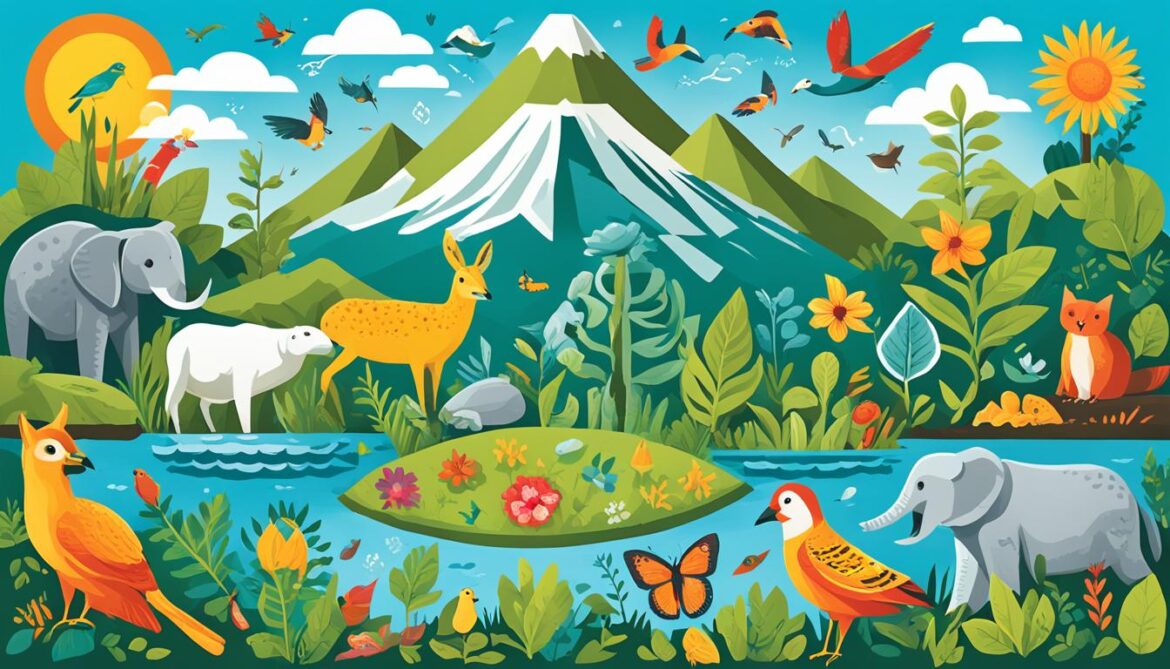
| Key Aspects of Biodiversity Conservation Efforts in Guatemala | Details |
|---|---|
| Protected Area System | Includes 348 protected areas, covering over 38% of Guatemala’s territory. |
| Environmental Management Institutions | Guatemalan Environmental Fund (FOGAMU) and others play a crucial role in conservation. |
| Financing Initiatives | Initiatives like the Biodiversity Finance Initiative (BIOFIN) mobilize financial resources for conservation. |
| Strategic Interventions | Priority investment agendas, programs, and sustainable land use practices promote conservation. |
The collective efforts of these initiatives and interventions contribute to Guatemala’s ongoing commitment to biodiversity conservation. By preserving its natural treasures and promoting sustainable practices, Guatemala ensures the protection of its unique ecosystems, species, and cultural heritage for generations to come.
Intervention Opportunities for Tropical Forests and Biodiversity in Guatemala
Guatemala’s tropical forests are vital for the conservation of biodiversity. The country has recognized a range of intervention opportunities to safeguard these precious forests and the diverse life they support. By strategically managing ecosystems, consolidating management processes, implementing environmental management practices, and enhancing productive competitiveness, Guatemala can make significant progress.
Promoting sustainable land use practices is essential for preserving the integrity of tropical forests. This includes adopting responsible farming techniques, implementing sustainable forestry practices, and encouraging the use of agroecological methods. By prioritizing sustainable land use, Guatemala can minimize deforestation and degradation while supporting the biodiversity that relies on these habitats.
Strengthening community involvement is another crucial intervention opportunity. Engaging local communities in biodiversity conservation efforts not only empowers them but also creates a sense of ownership and responsibility. Communities can contribute by participating in forest management, practicing sustainable resource use, and developing ecotourism initiatives. Their involvement fosters conservation consciousness and ensures the long-term protection of Guatemala’s tropical forests and their biodiversity.
“The preservation of tropical forests and biodiversity requires a holistic approach that incorporates sustainable land use practices and local community engagement.”
Supporting sustainable agriculture and forestry is imperative in addressing the pressures on Guatemala’s tropical forests. By promoting agroforestry systems that combine the cultivation of crops with tree planting, the country can create sustainable livelihoods while preserving forest ecosystems. Additionally, implementing responsible forestry practices will help minimize the negative ecological impacts of timber extraction, supporting the long-term sustainability of Guatemala’s forests.
Conservation Starts with Collaborative Efforts
Interventions to protect tropical forests and biodiversity require collaboration among various stakeholders. Governments, non-governmental organizations, local communities, and international partners must work together towards a shared vision of sustainable development. By pooling resources, sharing knowledge, and coordinating efforts, we can maximize the impact of our interventions and ensure the long-term preservation of Guatemala’s tropical forests and the wealth of life they support.
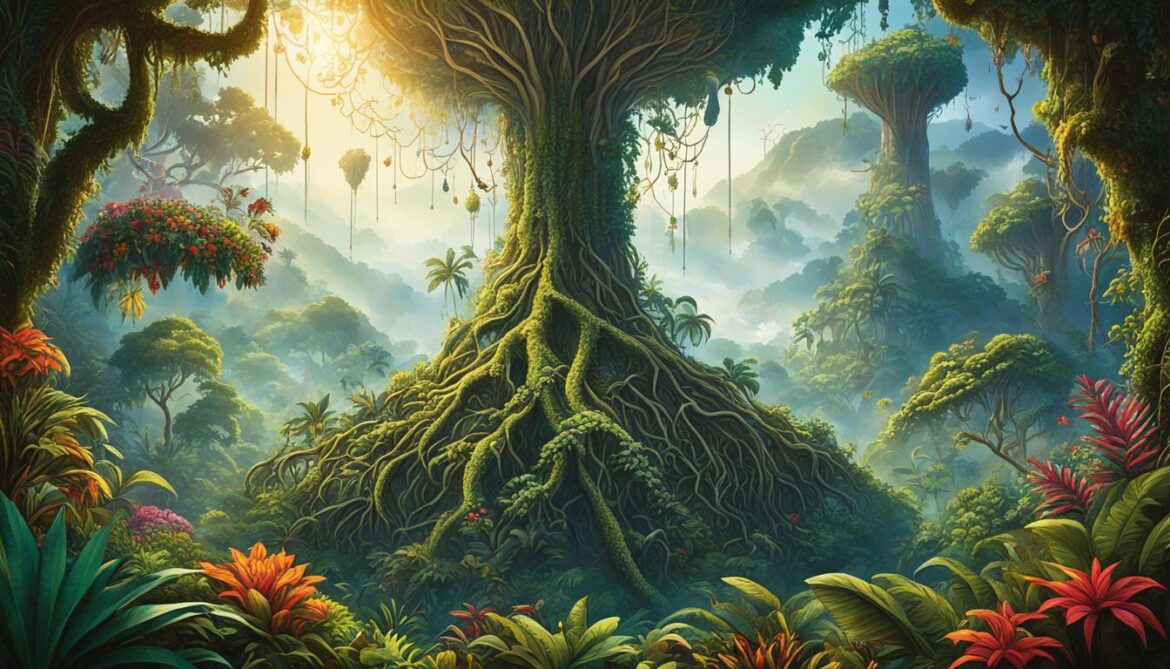
Importance of Cultural Diversity and Biodiversity Loss
Cultural diversity and biodiversity loss are deeply intertwined. The loss of languages, traditions, and cultural practices contributes to the overall loss of human diversity. Often overshadowed by the focus on species extinction, the decline in cultural diversity carries significant consequences. Just as each species plays a role in maintaining the balance of ecosystems, every culture contributes to the tapestry of human knowledge and identity.
In the context of Guatemala, a country with a rich cultural heritage and abundant biodiversity, the importance of protecting both cultural and biological diversity becomes evident. The preservation of traditional knowledge, languages, and customs not only ensures the survival of unique cultural identities but also fosters an appreciation for the interconnectedness of humans and nature.
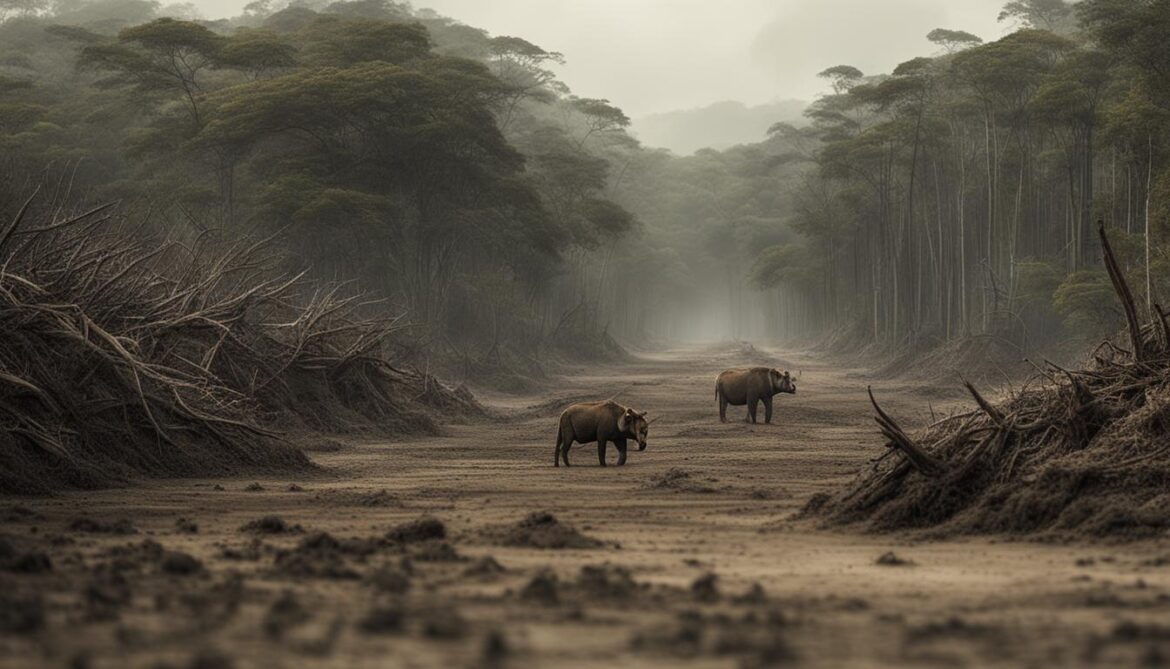
The loss of cultural diversity is as significant as the loss of species.
Conservation efforts should encompass not only the physical preservation of ecosystems and endangered species but also the safeguarding of cultural practices and sustainable lifestyle choices. By embracing cultural diversity and integrating traditional knowledge into conservation strategies, Guatemala can protect its unique identity and unlock the potential for innovative approaches to biodiversity conservation.
Preserving Traditional Knowledge
Traditional knowledge, passed down through generations, holds invaluable insights into sustainable practices and the intricate relationships between humans and the natural world. Guatemala’s diverse indigenous communities possess a wealth of wisdom that can contribute to biodiversity conservation efforts. By engaging and collaborating with these communities, their traditional practices can be integrated into conservation programs, fostering a harmonious coexistence between people and nature.
Sustainable Cultural Tourism
Cultural diversity serves as a magnet for tourists seeking authentic experiences and rich cultural immersion. Sustainable cultural tourism provides economic incentives for local communities to preserve traditional practices and protect their natural surroundings. By promoting responsible tourism practices that respect cultural heritage and biodiversity, Guatemala can harness the power of travel to drive conservation efforts and raise awareness about the importance of cultural and biological diversity.
Education and Awareness
Educating the younger generation about the significance of cultural and biological diversity is key to ensuring its preservation. Including cultural heritage and biodiversity topics in school curricula fosters a sense of pride and appreciation among students, encouraging them to become stewards of their cultural and natural heritage.
Preservation through Collaboration
Collaboration between governmental organizations, non-profit organizations, indigenous communities, and other stakeholders is essential to effectively preserve both cultural and biological diversity. By working together, these groups can pool resources, share knowledge, and develop holistic strategies that address the interconnected challenges facing Guatemala’s cultural and natural treasures.
Cultural diversity and biodiversity loss are two sides of the same coin. By recognising the importance of both and implementing conservation efforts that value cultural traditions and sustainable practices, Guatemala can build a future where cultural and biological diversity thrive together.
Goals and Ambitions for Biodiversity Conservation in Guatemala
Guatemala is committed to the preservation of its rich biodiversity and has set ambitious goals to ensure its conservation. The National Development Plan K’atun 2032 outlines key objectives to be achieved in the coming years. These goals focus on improving the management of protected areas, achieving zero net deforestation in core zones, and reducing the number of threatened species. By prioritizing these areas, Guatemala aims to safeguard its unique ecosystems and the diverse animal and plant species they support.
“Our biodiversity conservation goals are essential for the long-term well-being of both our environment and our people. We aim to protect our natural heritage, contribute to global conservation efforts, and create a sustainable future for Guatemala.”
The National Biodiversity Strategy and its Action Plan 2012-2022 provide a detailed roadmap for achieving these goals. The plan aligns with the Aichi targets and outlines 14 specific objectives. These include incorporating coastal-marine ecosystems into sustainable use and conservation mechanisms, restoring biodiversity and ecosystem services, and consolidating protected areas. Through strategic planning and collaborative efforts, Guatemala is striving to preserve its biodiversity for the benefit of current and future generations.
Guatemala’s Conservation Goals:
- Improve management of protected areas
- Achieve zero net deforestation in core zones
- Reduce the number of threatened species
- Incorporate coastal-marine ecosystems into sustainable use and conservation mechanisms
- Restore biodiversity and ecosystem services
- Consolidate protected areas
These goals reflect Guatemala’s ambitions to be a leader in biodiversity conservation. By actively working towards these objectives, the country aims to protect its natural resources, mitigate climate change, and ensure the sustainability of its ecosystems. Through the implementation of these goals, Guatemala seeks to inspire other nations and contribute to global efforts in preserving and valuing biodiversity. By rising to the challenge, Guatemala is taking proactive steps to secure a brighter future for biodiversity.
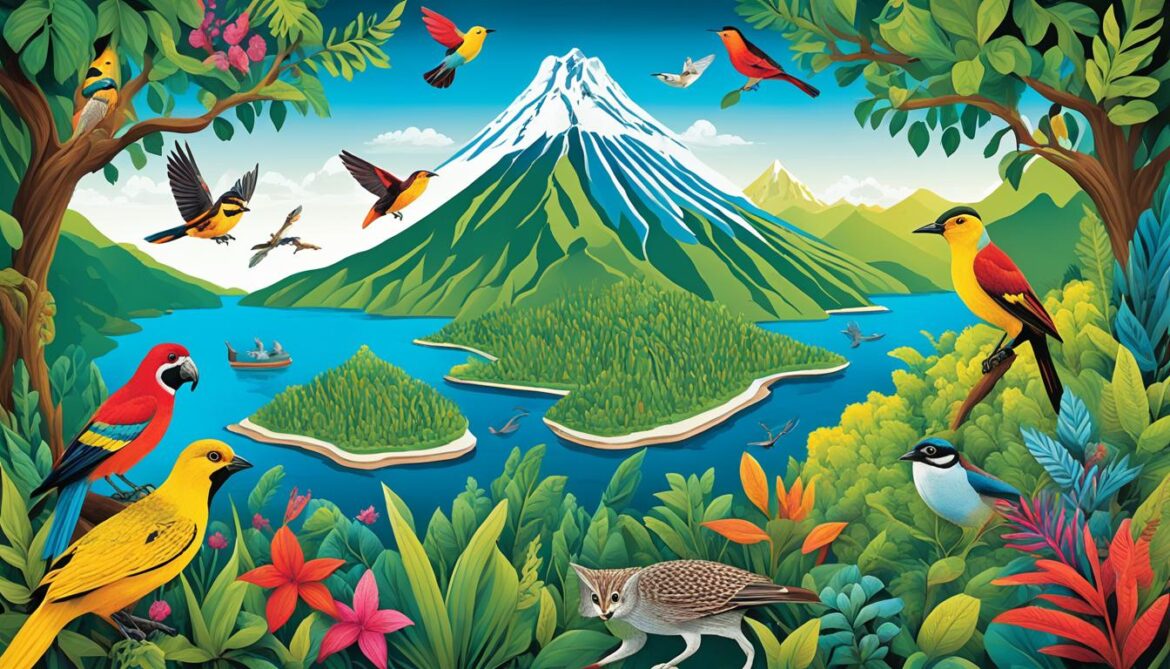
| Conservation Goals | Description |
|---|---|
| Improve management of protected areas | Enhance the effectiveness of protected area governance and strengthen conservation measures |
| Achieve zero net deforestation in core zones | Prevent any further loss of forests in critical areas and promote reforestation efforts |
| Reduce the number of threatened species | Implement targeted conservation programs and measures to protect endangered species and their habitats |
| Incorporate coastal-marine ecosystems into sustainable use and conservation mechanisms | Develop strategies to protect marine biodiversity and promote sustainable practices in coastal areas |
| Restore biodiversity and ecosystem services | Rehabilitate degraded ecosystems and promote the recovery of biodiversity and ecosystem functions |
| Consolidate protected areas | Expand the coverage and connectivity of protected areas to create larger, more resilient ecosystems |
Initiatives and Development Plans for Biodiversity Conservation
Guatemala is actively involved in various initiatives and development plans to enhance biodiversity conservation. The country recognizes the importance of preserving its natural heritage and is committed to implementing effective strategies. Some key initiatives and plans include:
Techincal Studies for Marine Protected Areas
Technical studies have been conducted to establish new marine protected areas along the Pacific coast of Guatemala. These studies aim to identify ecologically significant areas and develop conservation measures to protect marine biodiversity. By expanding the coverage of the National System of Protected Areas (SIGAP) to include these marine areas, Guatemala can safeguard important ecosystems and species.
Participation in the Biodiversity Finance Initiative (BIOFIN)
Guatemala actively participates in the Biodiversity Finance Initiative (BIOFIN), which focuses on mobilizing financial resources for biodiversity conservation. Through this initiative, Guatemala aims to redirect investments towards biodiversity protection and sustainable development. By utilizing financial mechanisms and innovative funding approaches, the country can support conservation efforts and ensure the long-term sustainability of its natural resources.
Engaging the Private Sector in Sustainable Fishing
Guatemala recognizes the importance of sustainable fishing practices in maintaining marine biodiversity. The country has implemented initiatives to engage the private sector in adopting sustainable fishing methods. By promoting responsible fishing practices, Guatemala can reduce the negative impacts on marine ecosystems and contribute to the conservation of marine species.
Development of Certification Schemes for Natural Rubber Value Chains
Guatemala is actively involved in the development of certification schemes for natural rubber value chains. These schemes aim to ensure that rubber production and processing adhere to sustainable practices that minimize negative impacts on biodiversity. By promoting sustainable rubber production, Guatemala can protect valuable habitats and contribute to the conservation of biodiversity.
| Initiatives and Development Plans for Biodiversity Conservation |
|---|
| Technical Studies for Marine Protected Areas |
| Guatemala has conducted technical studies to establish new marine protected areas along the Pacific coast, expanding the coverage of the National System of Protected Areas (SIGAP). |
| Participation in the Biodiversity Finance Initiative (BIOFIN) |
| Guatemala actively participates in the Biodiversity Finance Initiative (BIOFIN), mobilizing financial resources and redirecting investments towards biodiversity conservation. |
| Engaging the Private Sector in Sustainable Fishing |
| Guatemala is implementing initiatives to engage the private sector in adopting sustainable fishing practices, reducing the negative impacts on marine ecosystems. |
| Development of Certification Schemes for Natural Rubber Value Chains |
| Guatemala is involved in developing certification schemes for natural rubber value chains, promoting sustainable practices and protecting biodiversity. |
These initiatives and development plans demonstrate Guatemala’s commitment to biodiversity conservation and sustainable development. By implementing effective strategies and engaging various stakeholders, the country aims to protect its unique natural heritage for future generations.
Importance of Guatemala’s Biodiversity Conservation
Guatemala boasts a remarkable biodiversity that holds immense significance. As one of the 36 global biodiversity hotspots, the country is home to a wide range of unique ecosystems and endemic species. Conserving Guatemala’s biodiversity plays a vital role in global efforts to protect natural heritage and maintain essential ecosystem services.
Preserving biodiversity in Guatemala also contributes to sustainable tourism, allowing visitors to experience the rich natural wonders the country has to offer. By prioritizing conservation, Guatemala fosters eco-friendly practices and supports local communities that rely on tourism for their livelihoods.
Furthermore, Guatemala’s diverse flora and fauna provide a wealth of scientific and cultural knowledge. Researchers have the opportunity to study rare species and ecosystems, gaining insights that can contribute to global scientific advancements. Additionally, the country’s biodiversity is deeply intertwined with its cultural heritage, offering valuable insights into traditional knowledge and practices.
“Guatemala’s biodiversity is a source of scientific and cultural knowledge, providing opportunities for research and sustainable development.”
Safeguarding Guatemala’s biodiversity is not only crucial for the present but also for future generations. Conserving diverse ecosystems and species ensures a stable and healthy environment, supporting sustainable development and improving overall well-being.

Conservation Initiatives and Success Stories
Guatemala has implemented various initiatives to protect its biodiversity, including the establishment of 348 protected areas. These areas cover over 38% of the country’s territory and serve as havens for a wide array of plant and animal species. Additionally, Guatemala actively participates in international initiatives like the Convention on Biological Diversity.
One notable success story is the Maya Biosphere Reserve, located in Northern Guatemala. This UNESCO World Heritage site covers over 2 million hectares and showcases the country’s commitment to biodiversity conservation. Through sustainable management practices and community involvement, the reserve has been able to protect critical habitats and promote the sustainable use of natural resources.
By continuing to prioritize biodiversity conservation, Guatemala can ensure the preservation of its unique natural heritage and contribute to global sustainability efforts.
Conclusion
Guatemala’s biodiversity is a valuable treasure that requires focused conservation efforts. The country has made progress in establishing protected areas and implementing policy frameworks, but significant challenges remain. Habitat loss, overexploitation, and environmental degradation pose threats to the diverse plant and animal species that call Guatemala home. To address these issues, stronger management practices and sustainable approaches are needed.
Guatemala’s goals and ambitions for biodiversity conservation provide a roadmap for future efforts. By embracing cultural diversity and recognizing the interconnectedness of humans and nature, Guatemala can continue to protect its unique biodiversity for generations to come. Preserving this natural heritage not only contributes to global conservation efforts but also supports sustainable tourism and fosters eco-friendly practices. Through ongoing dedication and collaboration, Guatemala can safeguard its rich biodiversity for the benefit of current and future generations.
In conclusion, the conservation of Guatemala’s biodiversity is of utmost importance. It is a responsibility that requires the involvement of governments, communities, and individuals alike. By valuing and protecting this precious resource, Guatemala can ensure the long-term survival of its biodiversity and contribute to the global effort to preserve our planet’s natural wonders.




